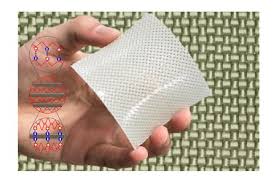
Breaking News
6.5x55 Swedish vs. 6.5 Creedmoor: The New 6.5mm Hotness
Best 7mm PRC Ammo: Hunting and Long-Distance Target Shooting
 Christmas Truce of 1914, World War I - For Sharing, For Peace
Christmas Truce of 1914, World War I - For Sharing, For Peace
Top Tech News
 EngineAI T800: Born to Disrupt! #EngineAI #robotics #newtechnology #newproduct
EngineAI T800: Born to Disrupt! #EngineAI #robotics #newtechnology #newproduct
 This Silicon Anode Breakthrough Could Mark A Turning Point For EV Batteries [Update]
This Silicon Anode Breakthrough Could Mark A Turning Point For EV Batteries [Update]
 Travel gadget promises to dry and iron your clothes – totally hands-free
Travel gadget promises to dry and iron your clothes – totally hands-free
 Perfect Aircrete, Kitchen Ingredients.
Perfect Aircrete, Kitchen Ingredients.
 Futuristic pixel-raising display lets you feel what's onscreen
Futuristic pixel-raising display lets you feel what's onscreen
 Cutting-Edge Facility Generates Pure Water and Hydrogen Fuel from Seawater for Mere Pennies
Cutting-Edge Facility Generates Pure Water and Hydrogen Fuel from Seawater for Mere Pennies
 This tiny dev board is packed with features for ambitious makers
This tiny dev board is packed with features for ambitious makers
 Scientists Discover Gel to Regrow Tooth Enamel
Scientists Discover Gel to Regrow Tooth Enamel
 Vitamin C and Dandelion Root Killing Cancer Cells -- as Former CDC Director Calls for COVID-19...
Vitamin C and Dandelion Root Killing Cancer Cells -- as Former CDC Director Calls for COVID-19...
 Galactic Brain: US firm plans space-based data centers, power grid to challenge China
Galactic Brain: US firm plans space-based data centers, power grid to challenge China
Fiber-reinforced hydrogel is 5 times stronger than steel

Hydrogels have shown significant potential in everything from wound dressings to soft robots, but their applications have been limited from their lack of toughness – until now. A team of scientists at Hokkaido University have developed a new set of hydrogel composites or "fiber-reinforced soft composites" that combine hydrogels with woven fiber fabric to create a material that is five times stronger than carbon steel.
Composite materials have been around for millennia and the principle is very simple. A very soft substance like mud can be made strong enough to make bricks by adding straw as a tempering material. The same applies to adding crushed pottery to brick, seashells fragments to ceramic, or glass fiber to plastic.
The latter is very similar to the fiber-reinforced hydrogel. Hydrogels are made of hydrophilic polymer chains that absorb up to 90 percent water. They aren't very strong or durable, but by adding glass tiny fibers the researchers created a tough, bendable, stretchable material.
Scanning Electron Microscopy (SEM) images of the fiber-reinforced hydrogels (Credit: Hokkaido University)

 The State's Last Stand
The State's Last Stand



